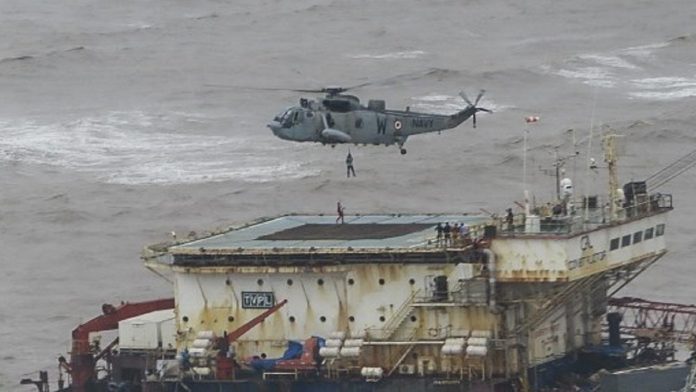
High-Level Meeting on Cyclone Yas: PM Modi reviews preparations- After Hurricane Tauktae, the country is now facing the threat of cyclone Yas. The Meteorological Department has expressed the possibility of turning it into a very severe cyclonic storm. It may hit the shores of Odisha and West Bengal on 26 May. In view of this, Prime Minister Narendra Modi held a meeting with officials of 14 departments including the National Disaster Management Authority (NDMA) and the National Disaster Response Force (NDRF). During this time, he reviewed the preparedness to deal with the storm.
The meeting was attended by the Chief Secretary and Officer of West Bengal, Odisha, Tamil Nadu, Andhra Pradesh Andaman-Nicobar Islands and Puducherry. It was also attended by Railway Board Chairman, NDMA Member Secretary, IDF Chief along with Secretaries of Ministry of Home, Power, Shipping, Telecom, Petroleum and Natural Gas, Civil Aviation and Fisheries. DG of Coast Guard, NDRF and IMD also attended the meeting.
May turn into a cyclonic storm on 24 May
According to the Indian Meteorological Department (IMD), the cyclone Yas is likely to move north, northwest. It can turn into a cyclonic storm by 24 May and take the form of a very severe cyclonic storm in the next 24 hours. It will reach the northern Bay of Bengal and adjoining northern Odisha and Bangladesh coasts near West Bengal on 26 May.
Bengal and Odisha are the worst affected
A high alert has already been issued in Andhra Pradesh, Odisha, Tamil Nadu, West Bengal and Andaman-Nicobar regarding the storm. This will affect Bengal and Odisha the most. Heavy rains are expected over Andaman and Nicobar and some areas of the east coast. This can also pose a risk of flooding.
Teams and ambulances on standby, including Coastguard
The Coast Guard, Disaster Relief Team (DRTs), Inflatable Boats, Lifebuoys and Lifejackets, along with a team of doctors and ambulances are on standby. Port authorities, oil rig operators, shipping- fisheries authorities and fishermen associations have been informed about the cyclone.
Continuous weather monitoring
According to an ICG spokesperson, the weather in the Bay of Bengal is being continuously monitored. Alerts are being sent with the help of ICG Remote Operating Station (ROS) in Tamil Nadu, Puducherry, Andhra Pradesh, Odisha, West Bengal besides Andaman and Nicobar islands.
Center issued guidelines for 5 states
Immediately activate the Emergency Command System and Emergency Operation Center and Control Room. Deploy the Nodal Officer and make his contact details available to the Ministry of Health.
Start the Hospital Disaster Management Plan in all the districts of coastal states. Preparations should also be reviewed for emergency situations in the hospitals of these districts.
Prepare an advance plan for shifting from community medical centers and hospitals to large hospitals in high altitude areas in areas that are coming in the path of the storm.
Monitoring units for covid management, health teams should also be prepared for diseases like dengue, malaria, cold cough, smallpox in addition to epidemics.
All health centers and hospitals in the hurricane-affected areas, including Covid centers, should have adequate manpower. All these centres should be fully functional. Lack of manpower should be bridged by districts not affected.
Adequate power backup in hospitals, labs and vaccine cold chains, oxygen production units and other supportive medical facilities in the affected areas. Apart from this, an adequate supply of electricity, water and fuel should also be ensured in these hospitals.
Traffic can be affected due to strong winds and heavy rains. Considering the emergency, collect the stock of essential medicines in advance. ORS, chlorine tablets, bleaching powder and other drugs used to treat corona should be arranged. These steps are necessary for both Covid and Non-Covid hospitals.




































